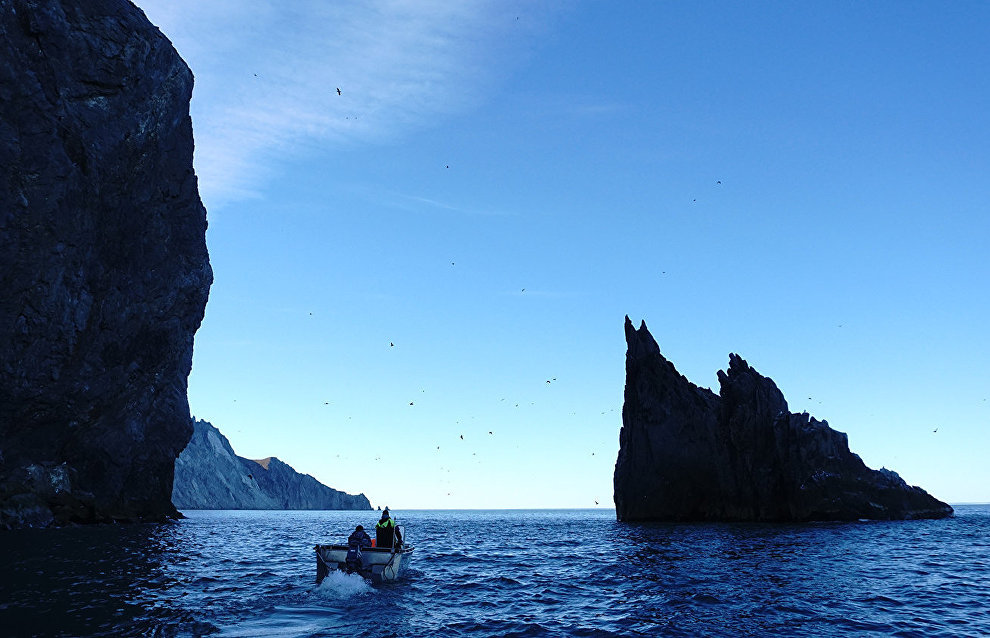Filmmaker Leonid Kruglov: Trailing the dreams
Leonid, how did you get involved in the world of the peoples of the north?
It all started with my first expeditions to the north a few years ago. My first truly northern expedition was to do a film about the Nganasan people who live on the very tip of the Taimyr peninsula. At that time I was on the staff of the Russian Academy of Sciences archive where we discovered dust-covered and long neglected boxes. Inside were expedition materials from the famous ethnographer Yury Simchenko and other researchers of the 1970s and 1980s with footage of the Nganasan people including the Kosterkins, a famous shaman family. I was deeply impressed by the story.
First we converted the film into an updated format after which a decision was made to make a video about the Nganasans to convey old stories and do an update on that ethnicity. It all came down to a series of expeditions whereby we talked to the remaining descendants of the Ngamtuso family of shamans. This was the beginning of my involvement. I learned a lot of interesting and extraordinary things about the shamans' view of life and existing myths. They really had areas in the north where a common person was not allowed to travel to since, according to Nganasan beliefs, the world of the dead stretched from there onward.
During subsequent expeditions we managed to get to the very north of Taimyr and we shot a long documentary on the Laptevs and Chelyuskin travels as they reached the northernmost tip of Taimyr to find out where the landmass ended. Each expedition was very difficult as we made our way through the ice floes on dog and caribou sleds. Everything was like in old times.
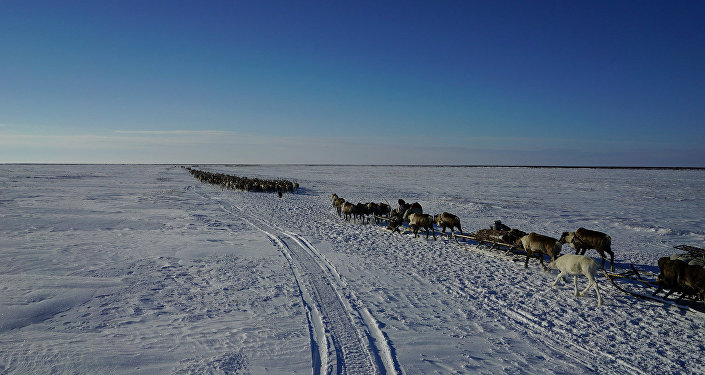
From Leonid Kruglov's personal archive
Two years ago I decided to bring all the expeditions and all the experience together into one large project that would show the spirit and history of our north. I had the idea that Russian explorer Semyon Dezhnyov's route fit best because in the 50-60 years that he moved northward with his units, the history of all of Russia was integrated with his life. All our studies and travels totaling over 10 years were expressed in the Great Northern Track film.
The idea of an expedition that followed the routes of the famous explorers was born out of a dream. In his dream, Leonid was walking on the tundra permafrost and found pebbles with an ancient inscription "Here a modern expedition follows the old travels." This dream was the beginning of our missions.
Have you ever thought of releasing your personal diaries?
I thought about it, but I wasn't sure it was worthwhile. One time, during an expedition to remote areas in Africa I tried to keep a video diary; each night I placed a camera by the bonfire and recorded everything that happened. When I watched the videos back in Moscow, I was terrified because I didn't look like my proper self. After many months wandering around, I looked totally different — bald with hollow cheeks surrounded by naked people with spears and rifles. I wasn't sure anyone would need that because it looked like a surreal movie. However, I released the movie Russian Africa with diary entries, and it aroused great interest. I then published the album Traveling with my best photos and parts of my personal notes as a narration. I have now prepared some fragments from my expedition diaries, co-authored by a good friend, which relates ideas, interesting conclusions, finds and reflections on my travels.
Why did you do a documentary format rather than a feature film for the Great Northern Track movie?
In my opinion, the line between a documentary and a feature film has been nearly erased because I approached my video as a feature film. High-quality footage with gripping, powerful shots, scenes with Chukchi dreams — all that brings it closer to the feature film format. I refrained from staged episodes, that is, dressing someone as Semyon Dezhnyov or the locals. This is why I think the line between a documentary and a feature film is fuzzy.
After following Semyon Dezhnyov's route, what is your vision of the 17th century?
That's a good question! I realized that this was a key century for any Russian resident, both ethnic Russians and many other ethnicities. In the 17th century Muscovy became Russia, institutions emerged, traditions of statehood and interrelations between ethnicities were born. Much of what we have in modern Russia is rooted in the 17th century, for example, our state principles and practices. I think it's crucial to know what was happening back then, how things emerged and where they came from. I tried to drill deep in this film to get to the century of great discoveries, a century which in many ways is parallel to ours, actually. A lot rests on the buildingblocks of this foundation.
According to the filmmaker, the mentality of a 17th century Russian person differed greatly from that of a Westerner. We know practically nothing about the exploration of the north whereas biographers' notes and pictures of the discovery of America abound in the West. Even Deszhnyov's diaries were securely kept from public view at the Yakut governor's office until the early 19th century. But as times passes, the public's interest in the era of discoveries only grows.
Today, people are interested in the 17th century, its puzzles and mysteries and especially its heroes. What do you feel Dezhnyov was thinking about as he set out on such a dangerous journey risking his own life?
I kept thinking about Dezhnyov. Here he was, living in the Archangelsk region, in a village where people were always known for their practicality, that is, they were not after some abstract ideal or quest but after a chance to change their life for the better, gain wealth and completely new opportunities.
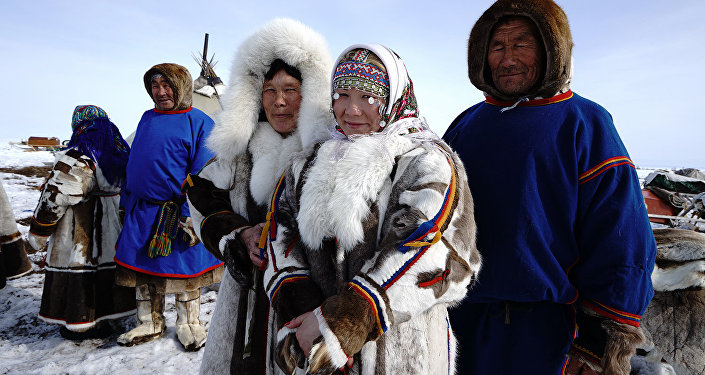
From Leonid Kruglov's personal archive
At that time going beyond the "Big Rock," the Urals, was a chance to discover incredible riches and to radically change your life. The Pomors were very interested in that, many of them wanted to remain in their compatriots' memory and this is why they built wooden churches, chapels or small memorial crosses. They did it at their own expense as they knew that they would be remembered by their descendants for years to come. This was a significant part of it for Dezhnyov, and one of the motives for embarking on a risky and hazardous expedition. But it is ultimately impossible to sort out this complex issue. I intend to talk more with the local people to better understand Dezhnyov. I have also been in such situations a number of times in my life: as I move forward, my capabilities and opportunities diminish and I will come back empty-handed if I turn back. So it is either go on until the end with the risk, or turn back, return to a quiet place and stop the active life with its big opportunities. I'm well aware what stands behind these great explorers: a will to do something really big for themselves and for the environment they live in.
Leonid talked about the harsh conditions, abrupt weather changes and absolute helplessness in the severe northern environment. Each expedition required stringent preparations and concentration but there were moments when neither satellite communications nor food and medicines could make the expedition safe. As he made his way along the Laptevs Straight towards Chukotka, our hero understood that you can only hope for good luck as you face the death defying ocean. Likewise, Dezhnyov also relied only on his fate and destiny as he sailed on an expedition that was hard even for modern boats. He was lucky to have his boat reach the cape while the rest of the seven boats hit obstacles or disappeared into the sea.
In one interview you said you have a special attitude towards photography. What are you prepared to risk for a captivating shot?
My biggest secret is that I launch every expedition for the sake of one or two shots. I just know that sometimes such a long journey will result in a dozen or so shots that will be displayed at exhibitions, will become images or some kind of windows into a different world, that can be looked at for some time. I am not that close to those who travel as athletes, trying to test themselves, their strengths and abilities. My motives are to take a shot that will endure by itself as an object of art, that contains a great deal of concentrated elements from history and northern cultural traditions. I'll risk a lot for that! Whereas the rest is just a fallout.
Does a good shot basically mean viewer praise for you or is it personal satisfaction for a job well-done?
Some shots I used to take on film that couldn't be seen immediately after shooting, impressed me immediately. I knew I had a shot on that roll of film that would bring personal satisfaction. If that happens and you feel you managed to do something positive, harmonic and unique, the sentiment later infects those who evaluate the photo. Those kinds of images are sure to appear on magazine covers or to have a long life being reprinted and displayed. One is related to the other, but the personal satisfaction comes first because you realize you hit a target during the shoot.
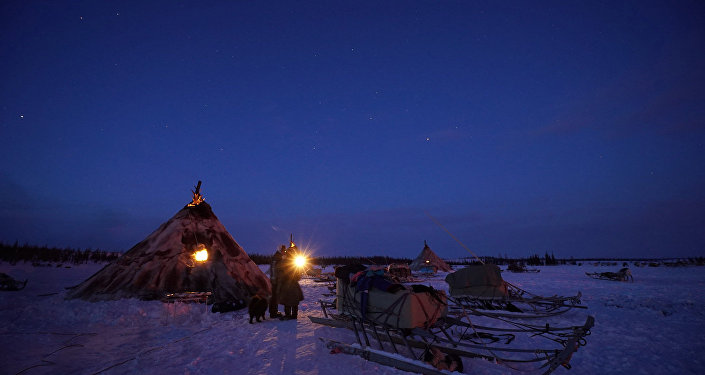
From Leonid Kruglov's personal archive
Have you encountered aggressive wild animals during your expeditions?
It never went as far as direct confrontation but we certainly often saw polar bears in the north. For example, they virtually besieged us during our travel across Taimyr. There was a situation when we had to put out early feelers in our camp because the bears were roaming around and were coming ever closer to us. We tried to scare them away with rescue flares but they kept coming back anyway to get food. There was an interesting episode when a bear lay down about 70 meters off the camp and was dozing for three days. The local Dolgan guides warned us that the situation would not settle, that the bears hunt walruses like that: he pretends to sleep, and when everyone gets used to it, then the onslaught begins. In Chukotka, contrary to that, we were looking for polar bears again. On several occasions I was so scared that my hair stood on end. We were looking for them in the winter among ice mounds in the hope of photographing them at a closest possible range. So as you walk among those mounds, like in a computer game, you don't know what's around the next corner. All of a sudden you stumble across huge footprints and you realize the bear must be somewhere nearby. We weren't lucky in Chukotka, and in the winter could hardly get those shots of wild animals, but things didn't end there. In our next project we'll try to shoot something about bears.
Does your film focus on Dezhnyov, as the main character, or does it lean towards the wild nature of the north?
On one hand, I tried to focus on Dezhnyov, his destiny, and written record, and the time. But I guess I didn't feel like dressing someone up and creating an image with an actor. Apparently, Dezhnyov became an internal wanderer, a northerner and a hero who heads into the unknown reaching the extremes of human capability. The nature of the north did it best by highlighting this image. There is no human face, there is only endless northern landscape.
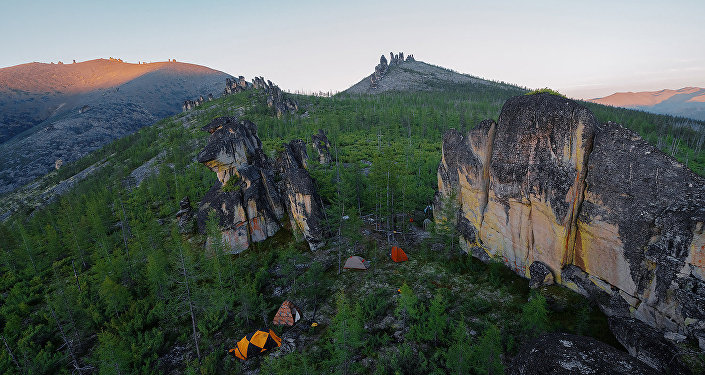
From Leonid Kruglov's personal archive
Before that, I thought I would face austere and unchanging landscapes, but during that expedition I found that this was not the case. I managed to see some incredible places and things like Manpupuner in the Urals or the Bering Strait cliffs, or the Indigirka gorges, and many others. Our north is not just tundra, it offers very diverse and beautiful relief with such powerful timeless and space-less images which stress the character of these northern heroes. Rocks, mountains, epic landscapes — this is what ultimately became a sort of portrait of Dezhnyov.
Each project has a certain purpose. What part does your project play in modern society?
Very much remains to be told in this film because 17th century discoveries cannot be covered in a 90 minute film. I hope that young people who also want to become researchers will continue searching and become interested in the history of the north after watching this film. Maybe a new wave of researchers will get involved who will reach out beyond, who will learn about the way it was and what else is there. For example, during my expeditions I came across the resting place of the Yakutsk single-mast tall ship that was used to explore Taimyr. Maybe someone will find this place and be able to touch something from the 17th century. Each find is preserved in time in the North; you can touch something that existed 200 or 300 years ago. The permafrost preserves not only mammoths but also other lost items, ships and complete expeditions. It was crucial for me to live through that and shoot it from inside me so that someone else can touch that atmosphere and even partly live through it.

From Leonid Kruglov's personal archive
Our north is unbelievably exciting. There are lots of places which are just inaccessible to travelers.
There must have been mistakes and accidents in you expedition that you were not prepared for. What would you have changed in your expedition if you could?
I lacked detailed studies of the Kolyma. There was some information about Russian winter quarters at the mouth of the river. It would have been extremely interesting to research and spend more time there, so I would love to go back there. I also want to traverse the Anabar Plateau with Taimyr nomads on caribou and caribou sleds. It's a most interesting but rarely visited place. There are a couple of places in Chukotka that we failed to reach due to time constraints and lack of opportunity. Ideally, I would like to reverse Dezhnyov's route at least from Chukotka to the Kolyma. There is a lot in our north that is still uncovered and un-researched. In this respect it offers great opportunities. As I have said, those who visit the north definitely want to go back. I do too! I will certainly go back to continue my research and to drill further and deeper.
We are looking forward to a new film about the Great North.
Interviewer: Alyona Burdina
